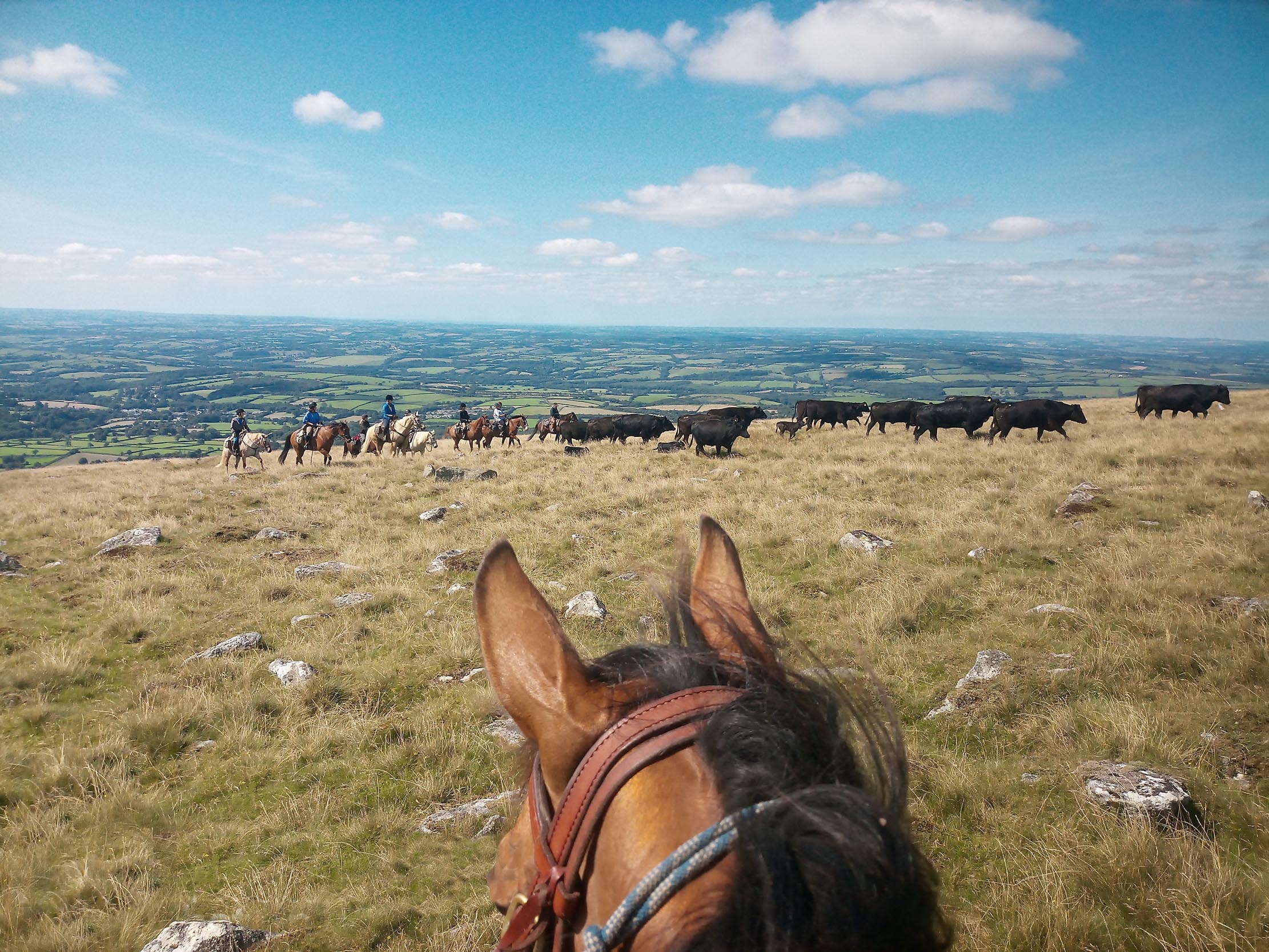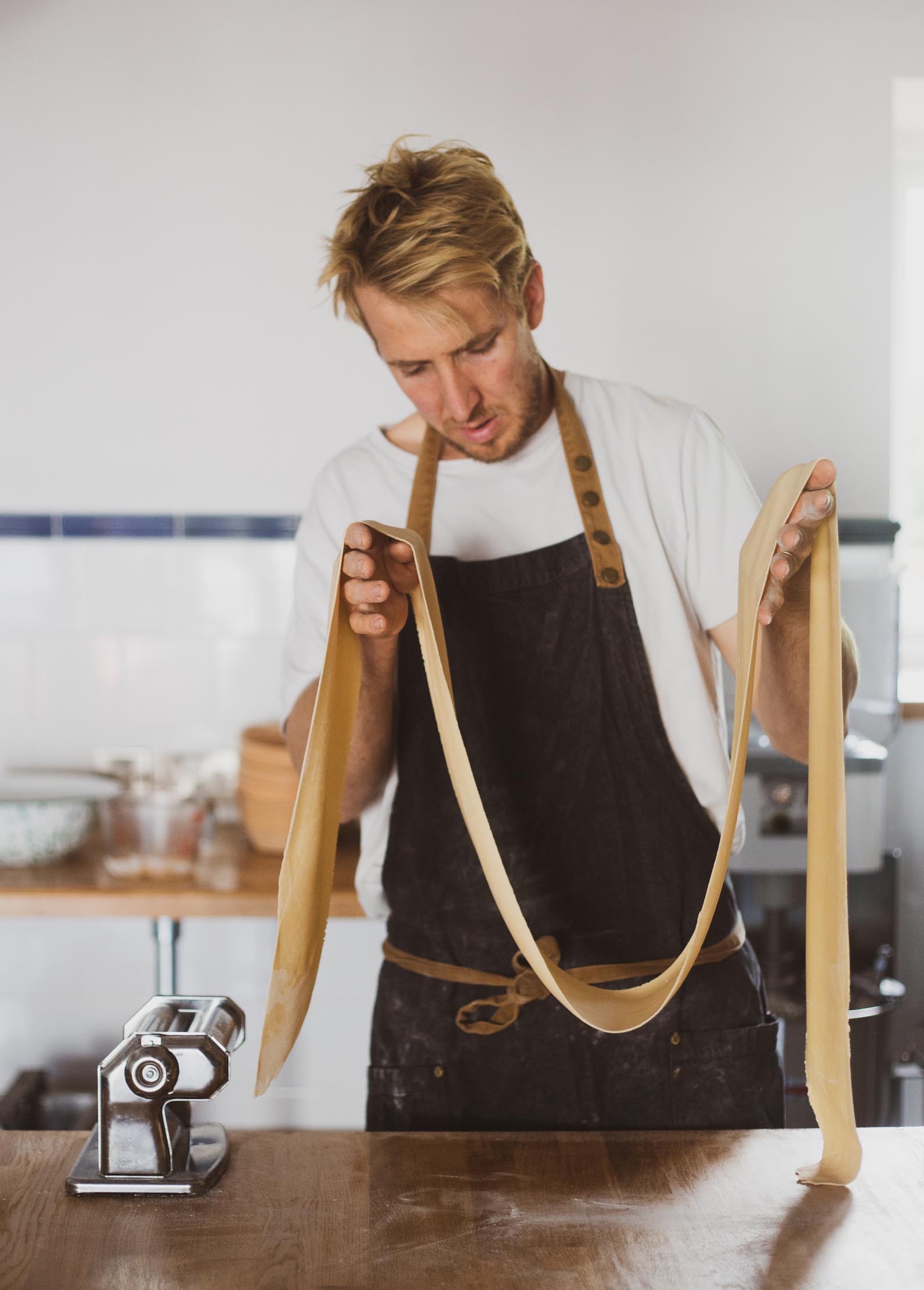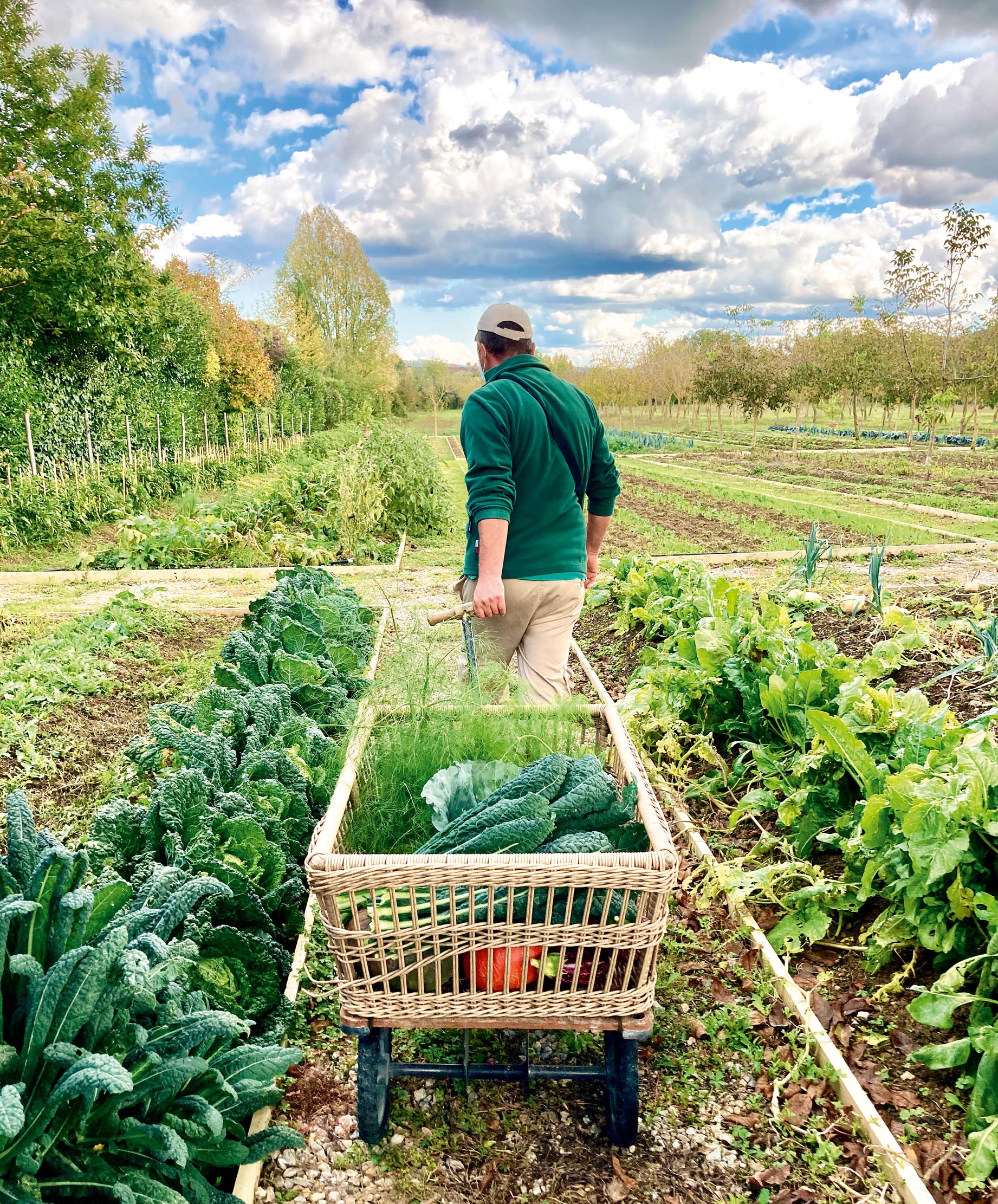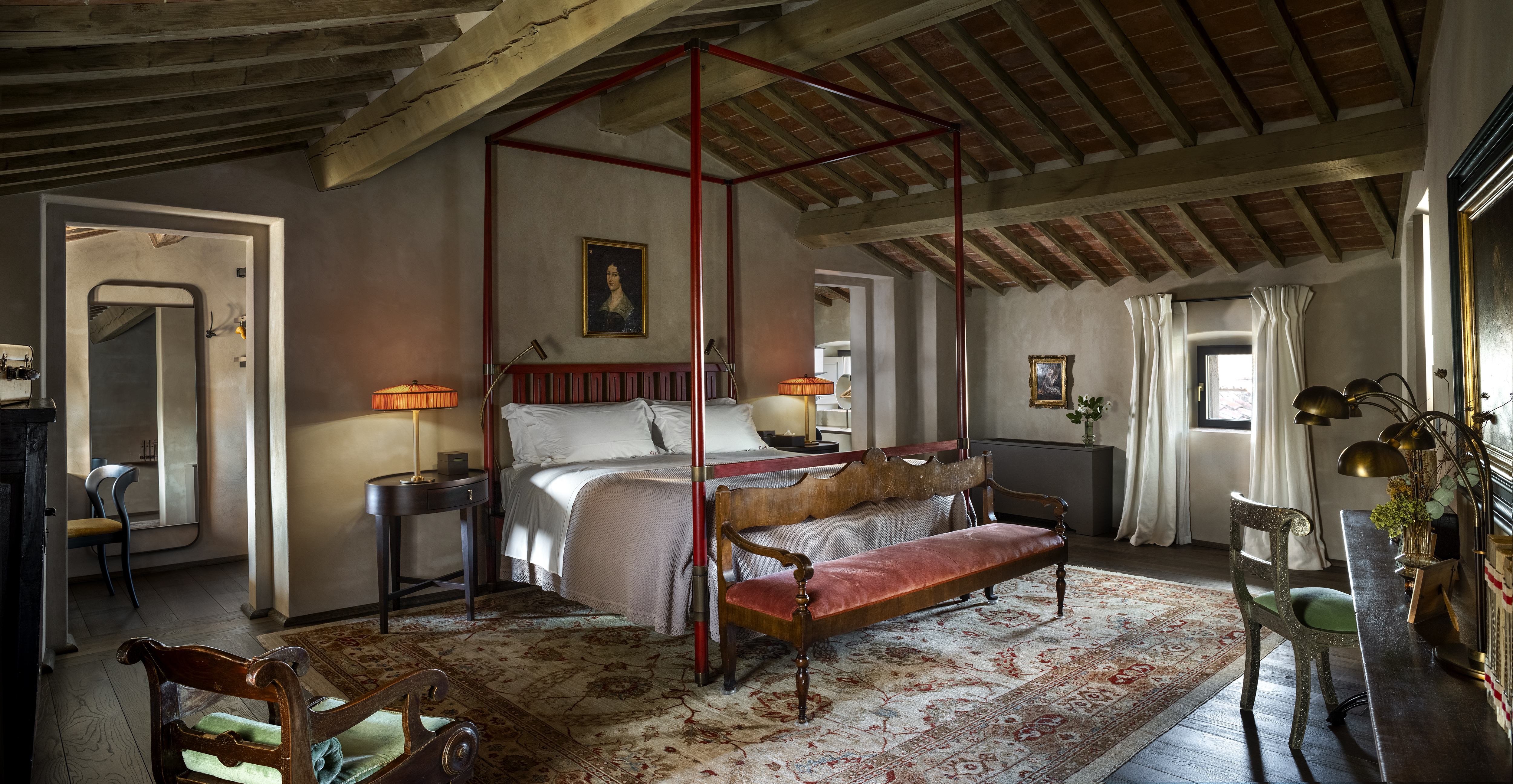Heading for the farm: Why more and more people are taking working holidays
More and more travellers are abandoning traditional holidays in favour of staying on a working farm. Rosie Paterson investigates why and where to find the best.


‘It’s funny how these things come back with a different label,’ muses Julian Matthews, the founding and managing director of Real Wild Estates. He’s talking about agritourism, the meeting of agriculture and tourism, a growing global trend based on an old idea. For much of the 20th century, farmers would regularly invite families onto their land to help harvest crops in return for free lodgings, he points out.
Today, although examples of agritourism can be found all over the world, it is most closely associated with Italy. It first started to achieve widespread fame in the Mediter-ranean country in the 1950s, as traditional and small-scale farming became increasingly less profitable. Farmers were forced to diversify, so they threw open the barn doors, welcoming outsiders, urban Italians and international tourists, who learned how to milk cows and prepare produce, such as cheese and wine, and picked vegetables and herbs. Free labour turned into paying customers and, over time, some of the agrotourismos became increasingly luxurious.
Perhaps the best high-end example in Italy now is Borgo Santo Pietro in Tuscany, a 300-acre estate 40 minutes from Siena (www.borgosantopietro.com). Spear-like cypress trees, so tall they seem to pierce the bright blue sky above, line the long gravel driveway. They’re a common feature outside hotels, farms and homes in the region, a symbol of welcome. Behind are mellow-coloured stone and terracotta-roofed dwellings — with bedrooms of varying sizes — and, at the top, the central house, more than 800 years old, all soft, crumbling corners, tumbling wisteria and linen curtains waving lazily at new guests through open windows.

The Borgo estate encompasses multiple gardens, an organic farm, spa, fermentation lab and cookery school. It’s the latest iteration in a long line of uses, from lazzaretto, or quarantine house, used by medieval pilgrims trekking the Via Francigena, to accomodation for local farming families. In the Second World War, partisans took refuge in nearby caves.
Claus and Jeanette Thottrup purchased Borgo Santo Pietro in 2001 and originally planned to live in the house full time. When this proved impossible, they set about creating a village-style hotel, starting with only a few rooms. The rest followed piece by piece. Everyone who visits is encouraged to take a farm tour, to help them get to grips with everything on offer.
Parts of the hotel are deeply personal, such as the pond, a gift from Mr Thottrup to his wife on the occasion of their son’s birth. The same son insisted on buying a rabbit, probably destined for the chopping board, at a local market some years later. Somewhat inevitably, one rabbit led to quite a few rabbits and, after several years biding his time, the chef finally got his way — rabbit is now a stand-out ingredient on the restaurant’s menu. The rabbits live next to a flock of free-range chickens, which, at nighttime, retreats to a row of candy-coloured coops. Nearby is a herd of adorable alpaca — there are tentative plans to turn the wool into slippers — and the most recent addition to the Borgo experience is a wild-swimming spot, a 20-minute walk away through sheep fields closely guarded by a Maremmano-Abruzzese sheepdog.
Pizza-making lessons in the cookery school are deservedly popular. ‘Dried yeast?’ quipped the chef with a worried look on his face, when I told him about my cooking exploits back in England. Apparently, fresh is always best. I crowned my pizza with milky mozzarella, plump caper berries, herbs and vege8tables from the extensive kitchen garden.
Exquisite houses, the beauty of Nature, and how to get the most from your life, straight to your inbox.

Agritourism is on the rise in the UK, too: in summer 2020, the holiday-booking website Farm Stay UK reported a 200% year-on-year increase in traffic. According to VisitScotland, agritourism will be worth £250 million to the country’s economy by 2030. ‘It’s huge now: staycations, getting out in Nature,’ reveals Mr Matthews, who puts part of the growing interest down to Covid. His company helps landowners facilitate Nature recovery on a large scale — as well as yielding viable financial returns. ‘Tourism is a really critical part because it’s not only vital as an economic means, it also gives access to land that, historically, hasn’t been open.’
For some landowners, the journey has only just begun. In Beaminster, Dorset, Luke Montagu, Viscount Hinchingbrooke, has given over 450 acres of his Mapperton estate to Nature-restoration projects since 2020. That figure is expected to rise to 1,000 acres in the coming years. He’s not the only one. Accord-ing to research by Coutts, almost a quarter of young, wealthy landowners are planning to make sustainable changes to their estates over the coming years.
Lord Hinchingbrooke’s children inspired him to kickstart the changes. ‘They are more motivated by environmental concerns and, obviously, with a country estate, you need to think about the next generation’s priorities.’
The future Earl of Sandwich looked to Knepp in West Sussex to make his and his children’s vision a reality: ‘It must be said that they [Knepp] are the pioneers. They have had such a positive influence on us and by many others by being so open with their data.’

A brand new herd of 25 White Park cattle now grazes on an area once populated by up to 200 animals, in partnership with regenerative organic dairy tenant farmers Tom and Sophie Gregory (2021 Dairy Industry Woman of the Year winner). This summer, a herd of Exmoor ponies, two beavers and a drift of Iron Age pigs (a cross between wild boar and Tamworth) will join the Mapperton fold. ‘They [the pigs] are the animals we need most urgently because they rootle the pasture in areas where we have quite species-poor grassland. The pigs can get in and churn up the ground and make it available for other species to germinate and provide an environment for invertebrates and so forth.’
Opportunities to volunteer are in the works, but, for now, interested outsiders can rent a former farm building or join an eco tour with Mapperton’s head of ecology, Tom Brereton.
‘It’s been one of those decisions that felt right at the time and feels increasingly right as the months go by,’ enthuses Lord Hinchingbrooke, ‘not least because you get to work with so many interesting, compassionate people: the experts, but also the kind of visitors that we attract. In terms of impact, we’ve already started generating additional revenue to support the estate through eco tours.’
In the first year, he adds, ‘we’ve seen a great increase in the number and abundance of different flower species. That has led to an increase in the invertebrate population, the insects and that has led to a doubling of some of our key bird species, such as the stone chat and the willow warbler’.
In the South-West — Launceston, Cornwall, to be specific — Coombeshead Farm is leading the charge of smaller agrotourismos (www.coombesheadfarm.co.uk). Visitors to the 66- acre working farm and guest house are likely to be up and about early, thanks to the resident cockerel’s morning call and enticing smell of fresh bread from the on-site bakery. There’s also a superb restaurant (popular with guests, day trippers and locals alike), a farm shop and workshops on pig husbandry and butchery.
In Devon, Phil Heard offers ridden cattle drives across Dartmoor (www.dartmoor ridingholidays.co.uk). Trips range from three to six nights, from May, the ‘spring cattle turn-out’, through to September, the ‘cow and calf muster’. Cattle, led by a lead cow, usually an older matriarch, respond well to being moved by horses, according to Mr Heard, who will teach you to work as a team with the other riders by flanking the herd.
Further east, a 15-acre smallholding called Glebe House, situated on a picturesque hilltop spot, three miles inland from the east Devon coastline, is making waves, in part due to its Bloomsbury Set-inspired interiors (www.glebehousedevon.co.uk). Following a stint in Italy, owners Hugo and Olive Guest bought the former Georgian vicarage from his parents. There’s a swimming pool, cutting garden and vegetable patch, a temperature-controlled charcuterie room and excellent walking straight from the property. Chickens strut around unbothered by the comings and goings and two pigs have claimed the woodland as their own. Mrs Guest, an artist whose colourful works hang on Glebe’s walls, has plans to install locally made cabin rooms in the grounds, too. It may evoke images of East End children picking hops in Kent, but agritourism is thoroughly at home in the 21st century.

The luxury Italian hotels rising from the ashes
Castello di Reschio is leading the way when it comes to agriturismo-inspired travel. Phoebe Hunt and Rosie Paterson check in.

Credit: Alamy
Two middle-aged ladies, one beautiful Fiat, and a magical week in Umbria
Mary Miers teamed up with an old friend as she visited one of Italy's most enchanting regions.
Rosie is Country Life's Digital Content Director & Travel Editor. She joined the team in July 2014 — following a brief stint in the art world. In 2022, she edited the magazine's special Queen's Platinum Jubilee issue and coordinated Country Life's own 125 birthday celebrations. She has also been invited to judge a travel media award and chaired live discussions on the London property market, sustainability and luxury travel trends. Rosie studied Art History at university and, beyond Country Life, has written for Mr & Mrs Smith and The Gentleman's Journal, among others. The rest of the office likes to joke that she splits her time between Claridge’s, Devon and the Maldives.
